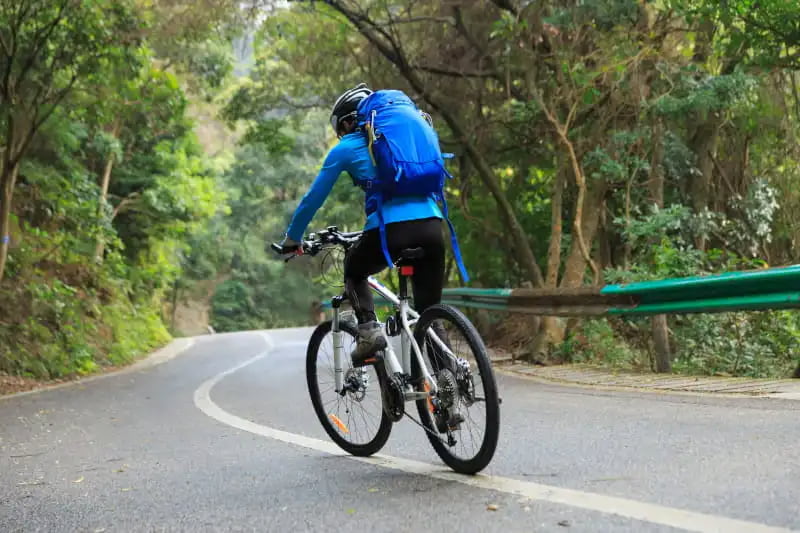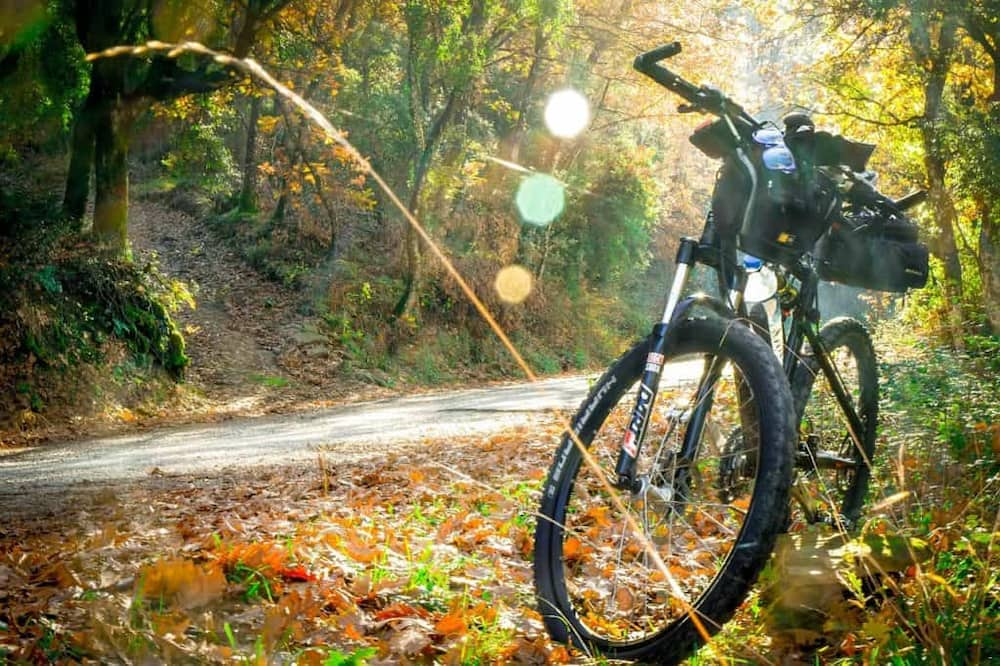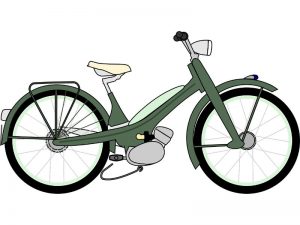Any bicycle is suitable for commuting. The advantages to both physical and mental health come to mind. We travel by means of environmentally friendly means. We are a part of a demographic that is changing and influencing how safely everyone should move through cities and towns.
Traveling by bicycle for your commute is a commitment that you make to yourself, other road users, pedestrians and your employer each day. Your ability to advance should be constrained or limited as little as possible by it. primarily to encourage you to continue working through any weather. So it ought to be entertaining.
If you only ride one bicycle, choosing the right one is important whether you only use it to commute, or to explore more of the world around you in your free time. Alternatively, sign up for a cycling group. Or sign up for free rides that are hosted by your neighborhood bike shop with your friends.
Are mountain bikes good for commuting? Yes. Mountain bikes are a great option if you want a flexible, adaptable vehicle with an upright riding position and flexibility for both leisure and commuting. Likewise, if you yearn for adventure.
Keep reading.
Table of Contents
Pros Or Commuting On A Mountain Bike
Stability
In my experience, the tire width plus higher weight help to increase the stability of riding in the city, especially on rough surfaces. Other types of bikes would have trouble navigating potholes, but mountain bikes were designed to handle the rough terrain found in nature.
Comfort
In order to be comfortable on unforgiving terrain, mountain bikes were created. Your wrists will be shielded from jarring bumps and rough terrain by these devices. In my case, using a mountain bike for commuting made my wrist pain go away because the tough construction and strong suspension took care of all the road jolts and potholes. Some people may find this to be a really crucial feature because they commute to work every day and don’t want their wrists to ache even before they start working.
Weather Conditions
Wide, tough tires are exceptional at lowering the risk of slipping in all weather conditions. I never lacked confidence while riding my mountain bike in the snow or the rain.
Upgradeability
This depends on whether you would ride a cross-country mountain bike or a downhill bike. Mountain bikes for cross-country travel have mounting points in abundance and space for additional accessories. Since most mountain bikes do not need to be as light as road or gravel bikes, there are virtually endless possibilities for accessories to create your ideal commuter bike.
Durability
All mountain bikes are designed to withstand the harsh elements. Your city probably resembles a concrete jungle, full of bumps, sharp edges, and other infrastructure that is not friendly to bicycles, unless you live in a cyclist haven like Amsterdam or Copenhagen. Therefore, the mountain bike excels in city commuting because it can withstand a lot of daily abuse.
Maneuverability
Mountain bikes are built to turn quickly. This is made possible by the long handlebars, which provide a lot of leverage for quickly turning the front wheel. Being able to maneuver is particularly helpful in cities when trying to avoid pedestrians or make quick movements through morning traffic.
Cons Of Commuting On A Mountain Bike
Weight
The majority of mountain bikes are large and heavy. Those features can occasionally be grating. When there isn’t much room to store your bike or if there are stairs on your route that you must climb while carrying your bike. When riding uphill, the weight is unquestionably noticeable as well.
Speed
Mountain bikes are slower than some other bikes due to the added weight and unfavorable aerodynamics. mountain bikes can move quickly when descending hills, but when compared to a road or gravel bike, quick starts are like day and night. Moving that additional weight undoubtedly requires more force. In addition, on flat, straight roads, the top speed is much lower. This is primarily caused by a mountain bike’s heavy tires, weight, or aerodynamics. mountain bike is not a good option if you need to commute over long distances quickly. As a side note, we must point out that a commute is not a race, so this is likely a less significant consideration if you only need a bike to get you to work.
Looks
The choice is entirely up to the individual cyclist, but many concur that mountain bikes can come off as less elegant than road bikes, gravel bikes, or even really stylish city bikes because of their bulk and roughness.
Size
Compared to other types of bikes, mountain bike has a larger footprint. Furthermore, they are bulky, wide, and occasionally tall. Their size can be quite annoying if you’re looking for a place to store your bike and must, as a result, give up room for other items in order to do so.
What Uses Are There For Mountain Bikes?
Regular mountain bikes are suitable for the majority of bicycle-related tasks. They can be as adventurous as you want them to be, within their own bounds, and they are tough, dependable, enjoyable, and fun. Mountain bikes designed specifically for downhill riding frequently rely on their own terrain to provide the best experience.
Generally speaking, the riding position is comfortable, allowing you to travel farther on rocky terrain. In order to provide an upright riding position, they have a flat handlebar. To help you climb hills or gain speed when there is a following wind, a very wide range of gear ratios are available. The smallest chainring on the front can have as few as 28 teeth, and a rear cog with 42 teeth is frequently used.
Depending on whether you want to navigate kerbs, rocks, or packed dirt trails, the wheels come in a variety of sizes. With varying levels of control and speed, you can ride on most terrains.
Some mountain bikes have mounts for panniers and racks. The majority of fenders and mudguards are attached to the seat post, and the front protection is less extensive than on a road bike or a hybrid bike. Every budget, endeavor, and expectation can be met with a model.
See more about Best Downhill Mountain Bike
What Types Of Commutes Work Best With mountain bikes?
Mountain bikes are best for commuting short distances in dense cities. Large, congested cities and downtowns lack adequate space for speed, and destinations are typically close to one another. This makes a mountain bike just as practical as other bikes, if not more so, because it offers comfort on city streets with old cobblestones or on train tracks where your tire won’t get caught between the rails. mountain bikes are among the best bike types for this kind of commuting due to their quick maneuverability.
On the other hand, It is not a good idea to use mountain bikes for longer commutes. Mountain bikes are heavy, and if you have to commute for more than an hour through the countryside, you will feel it in your riding uphill or at a slower speed.
History Of Mountain Bikes
We could start in the late 19th century, when the military adapted conventional single-speed bicycles to travel through the countryside and transport troops. Then fast-forward to the suburbs of Paris in the early 1950s, where Velo Cross Club Parisien (VCCP) modified road bikes by utilizing moped forks and changing the gearing. Their motivations were fueled by the boredom they felt with the French cyclocross racing scene.
Since we don’t typically think of Paris in terms of mountains, we turn to the USA where, at the same time, single speed bikes beloved by paperboys were being modified with “balloon” tyres and flat handlebars. Outliers and pioneers: a cottage industry has not yet developed.
25 years later, still in the United States, a group of thrill-seeking youth in northern California were modifying old, beaten-up machines for one-off mountain descents.
The wheels were too brittle for more than one run, and the brakes got too cooked from overuse. These gangs, however, were racing and enjoying themselves. And as much as they did, the ideas and advancements started to clash. “Klunkers” was the name given to these bicycles.
Once organized racing became popular, engineering moved from the junkyard to the basements and sheds of these young people, who gave us the first custom mountain bikes. Soon after, manufacturers of road bikes introduced their own lightweight materials to the mountain bike market. It’s exciting to learn that some of the trend-setters’ names were associated with businesses that worked on creating the first mountain bikes for sale in stores, including designers Gary Fisher and Tom Ritchey.
The mountain bike was introduced to the world through mass production in the 1980s, and a genre emerged in the 1990s. They brought new technology with them, such as triple-ring cranksets, handlebar gear shifting, and 26-inch (559-mm) wheels that were smaller than those of road bikes and single-speed bicycles. The geometry of the frame gradually changed into a position that was comfortable and maneuverable. It also became necessary to have space between the wheels to prevent mud from obstructing their ability to rotate so as to avoid hitting rocks.
Later, mountain biking became more specialized into three categories: cross-country, trail, and downhill. With these particular modifications, designers and producers introduced innovations and cross-overs from motorsports, such as the disc brake and hydraulic suspension telescopic forks that lessened the impact of running over rocks and tree stumps. They were also some of the first bicycles to adopt electric power.
All Mountain and Enduro mountain bikes are now produced for other sports as well. Not every one of these comes highly advised for commuting. The same mountain bikes that are used by today’s pros can be purchased from your neighborhood bike shop or online for thousands of dollars. There are entry-level machines available to suit your needs if you simply want to explore a nearby abandoned railroad line or take on your toughest local trail.
Networks of dealerships exist all over the world. Unless they have suspension, you can have them serviced, and doing DIY or maintenance at home is no different from doing so for road or hybrid bikes. If you do decide to go on an adventure in a national park or bumpy transcontinental trail, there are forums and websites stuffed with GPX routes to download to your bike computer and guidance on when and where to travel safely.

Consider Making The Following Changes:
- Tires: To begin, you should swap out your mountain bike’s large, bulky off-road tires for a smaller, slicker tire that will fit on your rims. This is because although mountain bike tires may be convenient on the dirt road, they tend to add a bit of weight and slow you down when used on tarmac.Replacing them will have an immediate impact on the weight, feel, and speed of your bike. Use the proper size tubes when mounting various tires; a pair of puncture-proof tubes will work well in this situation.
Additionally, when inflating the tires, make sure to pump them up very hard to lessen rolling resistance as you ride your bike. - Add Mudguards: Only a few mountain bikes have fenders, despite the fact that they are made for mud and dirt roads and terrain. This is typically done to avoid having mud become stuck between the tire and the mudguard, which would render you immobile. Fenders might be useful since you’ll be riding your bike to work in the city. To prevent road grit and water from staining your business attire, you should install a set of fenders on the front and rear tires (although in reality, you might be better off wearing a spare set of clothes, just for riding). Your arrival at the office will be clean and dry thanks to this.
- Lights: You absolutely must have a pair of bright lights installed on your mountain bike if your line of work requires that you travel during the night. See our ‘Bike Laws’ page for information regarding your local state laws.
As a rule, commuter cyclists opt to equip a white front-facing light and pair it with a red rear-facing light. These will guarantee that you have enough light to comfortably move through the dark. You have a lot of great options, including USB rechargeable, battery-operated, and generator-equipped options. - Reflective Tape: You should think about adding this as another significant inclusion. It’s a good idea to use reflective tape to make yourself more visible and safe at night. In your neighborhood bike shop, you can easily find this. Place the tape in strategic locations that will reflect light well at night. I advise mounting them on your cranks because doing so will attract the attention of drivers.
If your current pedals aren’t safe for use on the road, you might want to replace them as well. This should make it possible for you to comfortably ride in your everyday office shoes.
What Drawbacks Exist With Riding An mountain bike For Commuting?
Tires Are Slow & Heavy
Almost all mountain bikes have wide, deeply treaded tires that are typically operated at very low tire pressure. Great traction and bump absorption result from this, but at the expense of increased rolling resistance. (Considering all the extra rubber, there are also a few extra ounces of rotating weight.)
Currently, on rocky descents and rooty climbs, traction and bump absorption are of utmost importance. However, the rolling resistance is detrimental when traveling on plain pavement or even smooth dirt and gravel. To maintain a reasonable pace when compared to street tires is just plain difficult.
There’s no free fix, but the solution is often cheaper than buying an additional bike.
Budget Option: Swap To Slick Tires
If your mountain bike’s new purpose is mostly or entirely commuting, then replace the knobbies with slick or semi-slick tires.
Look for a pair that is about a quarter-inch narrower, at most, than the width you are currently running. (Otherwise, you might experience a change in the bike’s handling characteristics from what you’re used to.) 26″ wheels have few options, but 27.5″/650b and 29″/700c wheels have many options.
Better Option: A Second Wheelset
What if your mountain bike needs to perform two tasks, like, weekday commutes plus weekend trails?
Twice-weekly tire changes are not fun for anyone. If you have a little more cash to spare, then consider buying a second wheelset to use as a dedicated, slick-tired commuting pair. They start at around $200 to $300 for something robust but heavy, using quick-release hubs with older axle-width standards. It’s not uncommon for premium rims with thru-axle hubs to be several times more expensive.
Recall that for city riding, wider wheels and narrower tires are frequently appropriate. The increase in one offsets the decrease in the other, which keeps the total outside diameter about the same. It would be wise to first consult a bike shop as there might be additional restrictions regarding bottom bracket height, frame/fork clearance, and brake mountain.
Lack Of Rack & Fender Mounts
There are basically three essential accessories for commuting:
- Lighting will be a necessity.
- Fenders are likely necessary to protect against road spray and rain.
- To carry work supplies, you’ll likely prefer a basket or pannier.
The majority of lights use a rubber strap or screw-clamp mount, which turns on and off in a matter of seconds. (Dynamo lights are a different matter, but they rarely belong on mountain bikes anyway.)
However, with the others, things become more difficult.
Fenders and racks should ideally screw into tiny eyelets that are located close to the axle and higher up the frame/fork. In spite of shifting weight and vibration, this results in a rock-solid fit.
Such eyelets are, however, uncommon on mountain bikes. That only leaves a few choices, which I’ll list below.
Can You Attach Fenders To A Mountain Bike?
Yes, but options are more constrained because of tire width and a lack of specific fender mounts. To prevent compatibility issues and installation hassles, stick with mountain bike-specific fenders.
If you’re still running knobby tires, then mountain bike fenders are the only kind that’s wide enough to accommodate them. But if you’re running slick tires for commuting, then you’ll still need Road fenders that clip onto a mountain bike. One reason is the absence of mounting eyelets, but you might also experience difficulties where standard fenders attach near the bottom bracket and fork steerer.
My suggestion: Look into clip-on fenders like the SKS Mudrocker for mountain bike tires (buy front and rear) or the SKS Raceblade for road tires (buy the pair). They don’t wrap around and protect you as fully as standard fenders, but they’ll mount to any bike up to the specified tire width.
Can A Mountain Bike Have A Rear Rack?
Yes, but you’ll need a mountable one that attaches to the seatpost or seatstays. Ordinary city-style racks won’t work with mountain bikes because so few of them have mounting eyelets.
Due to moving parts and the wider variety of frame designs, mounting racks on full-suspension bikes can be particularly challenging. Since there is no support from below, seatpost-mounted rear racks aren’t as sturdy or stable, but they are by far the most common.
My suggestion: Start with a clip-on rack, such as the Thule Pack ‘N Pedal Tour Rack (available here). It works on the majority of road bikes and many mountain bikes, but you might need to check by measuring the seatstay circumference.
Take extra care if your frame is carbon fiber. They’re designed to maximize strengths only in certain directions, so the shear force of a rack may risk damage and even void your warranty.
Suspension Bob Saps Energy
While pedaling, a small portion of our weight rises and falls. This is essentially undetectable on a rigid (unsuspended) bike. There is only a very slight amount of tire compression.
But with front or full suspension, that vertical motion creates a repeated bounce known as suspension bob.
There are essentially three ways to avoid or lessen bob when using an mountain bike on the street. From most to least effective, you can:
- If the fork/shock has a lockout lever, then use it!
- If you have adjustable compression damping, then max it out. That’s almost as effective as a simple lockout switch, but you’ll need to reset it to “normal” when you hit the trails again.
- Finally, the least effective but most universal option is to dial up the preload. It’s the least useful of these three and might be the most difficult to undo for trail rides, but it’s also the most common.
Should You Ride Your Mountain Bike To Work?
The easiest way to try bike commuting is likely on a mountain bike, so go for it! However, if you intend to commute for an extended period of time, consider purchasing a separate city/commuting/leisure bike if it is practical.
A single bike cannot be the best at everything. It’s more fun to have a couple that serve different purposes excellently than one that serves most purposes sufficiently. Leaving components and settings in place rather than switching them around for trails and commuting is also more practical.
If commuting simply isn’t an option, you can always sell it used and make little to no money off of it.
However, if money or storage are limited, a second wheelset (or at the very least, a tire swap) will make your mountain bike feel more at home on paved surfaces.
Mountain Bikes FAQs
Mountain Bikes: Safe For The Roads?
When traveling on roads, bicycles other than mountain bikes are more useful. Nevertheless, they are perfectly capable of doing so and can maneuver through city center traffic, towpaths, trails, and potholes with ease. If all you can ride on is new, butter-smooth asphalt, it might become tedious.
Are Mountain Bikes Quick?
How quickly do you need them to move? On the surfaces they are meant for, they are brilliantly quick and thrilling. It’s one of the reasons racers don body armor. Any time you watch a downhill race on a rider’s GoPro, you’ll smile. On safe surfaces, the top speed will be constrained by the gearing and weight.
Is It Harder To Ride A Mountain Bike?
Although a mountain bike has a comfortable overall riding position, its weight and size will cause you to use your upper body more than you would on a different kind of bike for the same ride. The arms are worked along with the quads and calves when starting a heavier bicycle from a standing position or pushing it up hills.
Can You Travel Long Distances On A Mountain Bike?
A mountain bike would be used to travel the shortest distance between any two points on a map. They enable you to travel over most terrains and are dependable, enjoyable, and comfortable. There will be more effective bicycles you would use if you suggested they be transported along clear, dry roads.
How Effective Are Mountain Bikes Uphill?
In particular, mountain bikes excel at climbing hills. They typically have a very wide gear ratio despite weighing on average more than other bicycles. As a result, pedaling is much simpler. Your cadence will be quicker. As a result, you will not need to use as many muscle groups to maintain your momentum.
Do Mountain Bikes Work For Commuting?
A commuter on a mountain bike is acceptable. When you only use roads, some versions will provide more overall comfort and efficiency. You can navigate the tarmac more easily by changing from your knobby tires to semi-slick ones. Verify that they have mounts for any equipment that will keep you stable and dry.
Final Words
Don’t forget to take a look at your old mountain bike the next time you consider switching from taking public transportation to biking to work. A practical, efficient, and affordable transportation alternative is possible with the right modifications.
To find the best route, however, make sure to do a little research; stay off the busy roads and highways and take advantage of bicycle lanes, paths, and side streets.
You never know, maybe you look forward to going to work.
Thank you for reading.



